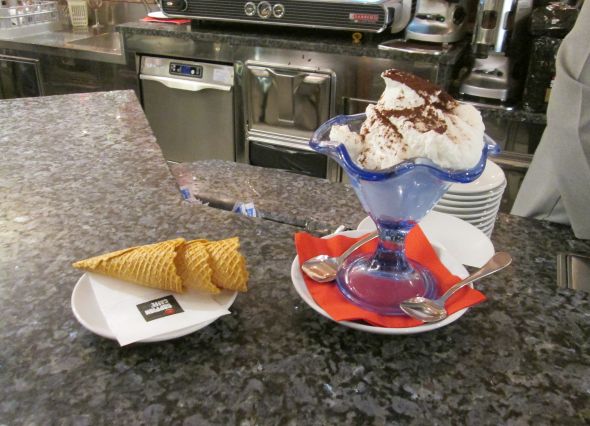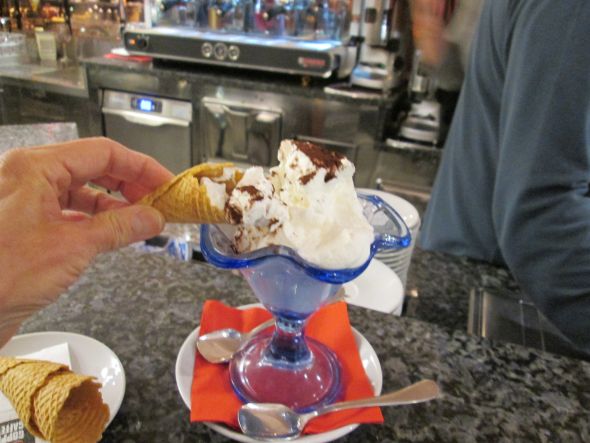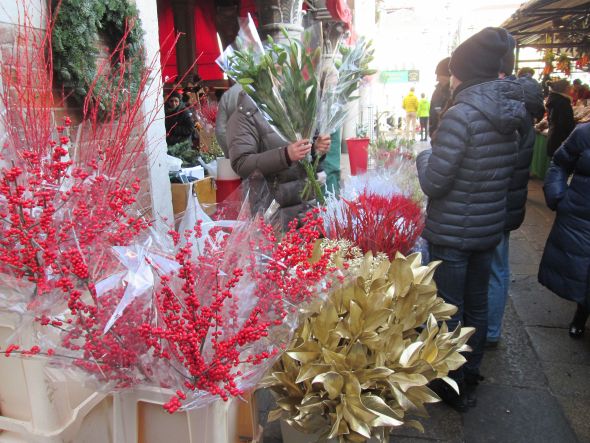
Yesterday was December 13, as you know, and it was also the feast day of Santa Lucia, as you know now.
Not-so-trivia alert: The inescapable but ever-beautiful Neapolitan song, “Santa Lucia,” which is known everywhere as far as the Tadpole Galaxy, does not refer to the lovely Sicilian martyr. It refers to Borgo Santa Lucia, a waterfront neighborhood of Naples which is named for the lovely Sicilian martyr. Words such as “ship,” “sea,” and “Naples” spangling the song kind of give it away, at least if you understand Italian or Neapolitan.
Words may come and go, but someone hit on a melody which is impossible to forget. It even works in Thai. The Italian founder of Silpakorn University in Bangkok, Prof. Corrado Feroci, loved it so much that he used the tune as the setting for the official song of the university.
What does all this have to do with Venice? St. Lucy’s mortal remains lie in state above the high altar of the church of S. Geremia, having been moved from her very own church in 1861 when it was demolished to make room for the railway station. (Which is why the Venice station is subtitled “Santa Lucia.”)
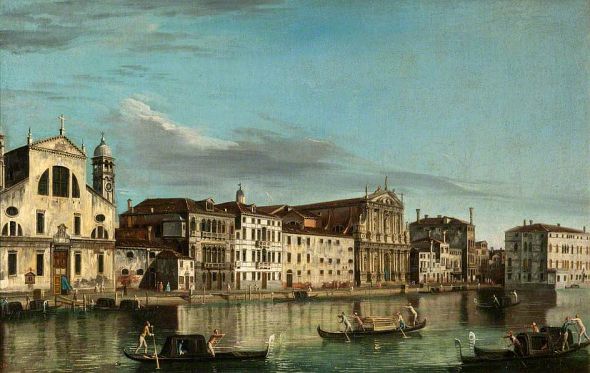
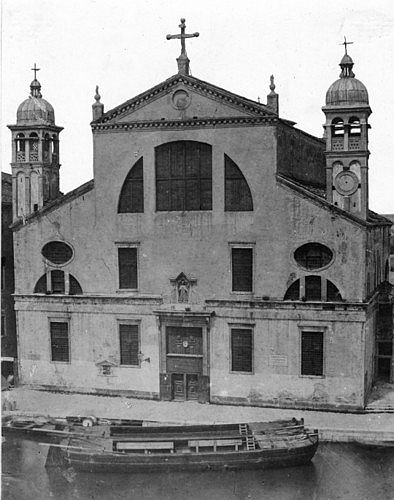
Saint Lucy is the saint responsible for addressing eye problems. The only time I ever went to services at San Geremia on her feast day I was struck by the huge floral arrangement offered by the Ophthalmologists’ Association of the Veneto, which was extremely gracious, though odd. Wouldn’t she be the one to put them out of business?
In the old days in Venice, people used to link St. Lucy’s day to freezing cold: “Da Santa Lussia, el fredo crussia” (St. Lucy’s Day, the cold is excruciating). Global warming has sent that saying off to follow the dodo. Anyone who utters this phrase nowadays — me, for instance — is indulging in nostalgia.
But St. Lucy maintains her place in another common exchange. Let’s say you run across someone you know, whom you compliment. Example: “Hey, you’re looking good.” Rejoinder: “Thank St. Lucy who’s given you good eyes.” Depending on the tone of voice, the remark allows for plenty of deprecation, implying anything from “Thank St. Lucy, but you should go get your eyes checked” to “Thank St. Lucy, but are you going blind?” Evidently she can control your eyesight at will.

She was a native of Siracusa, and her body was brought here in 1280. The specific reason was probably the general reason for such events (Venice possessed some A-list relics, such as the remains of St. Stephen, the first Christian martyr, and Saint Zachary, father of John the Baptist), to wit, money! Sorry, I meant offerings and gifts from religious pilgrims. Religious tourism was a very big deal in the old days, and everybody wanted to make the most of their saints. Naturally, the people of Siracusa want to have her back. She’s like the Elgin Marbles. But Venice has determined to keep her, though the patriarch did allow her to return home for a while a few years ago. I can’t remember why. Maybe it was her birthday.
Yesterday Lino gave me a startling new bit of Lucy lore. He was geezing about how it used to be one of the biggest feast days celebrated in Venice and now nobody pays the slightest bit of attention to her (except for annual flowers and recurrent badinage). And then he said “And everybody used to eat storti with whipped cream.”
Whipped cream I know, but storti? Literally, it means “crooked,” and I’ve heard an elderly person refer to somebody crafty or cunning as a “storto dal Dolo.” This is a jest, because while “storto” is clearly not high praise (calling someone “crooked” isn’t pretty in English, either), saying that the sneaky person came from Dolo actually refers to a well-known sort of waffle cone made in Dolo, a town on the Brenta river which used to be famous for producing this crunchy little item. Every March Dolo puts on the “Carnival of the Storti.”
Cones and cream, in whatever form, are evidently destined for each other, the Ilsa and Rick of fattening snacks. I didn’t know St. Lucy encouraged people to eat them, but I say any saint’s feast day ought to call for whipped cream.
So I immediately started nagging Lino to take me to somewhere I could eat storti with whipped cream, and although he said you used to be able to get them anywhere in Venice, he remembered a place not far from the church of San Geremia. We went in and asked if they had storti with whipped cream. “Of course,” said the woman behind the bar, in a way that implied that we might have asked if they had electricity.
For any traveler who wants to chance his arm, or palate, I will reveal that this confection was consumed at the Bar Gelateria Da Nini in the Strada Nova a few steps from the Ponte delle Guglie at number 1306. I am not responsible for your arteries, I’m just fulfilling my journalistic responsibilities.
